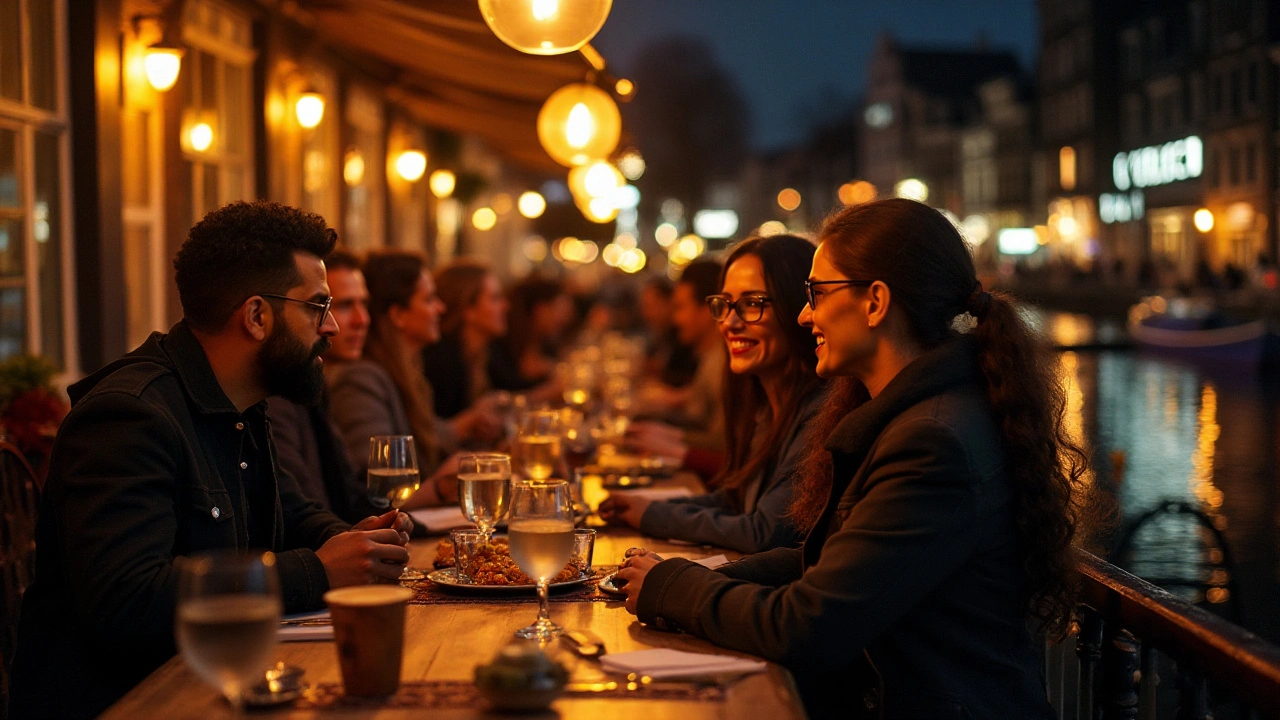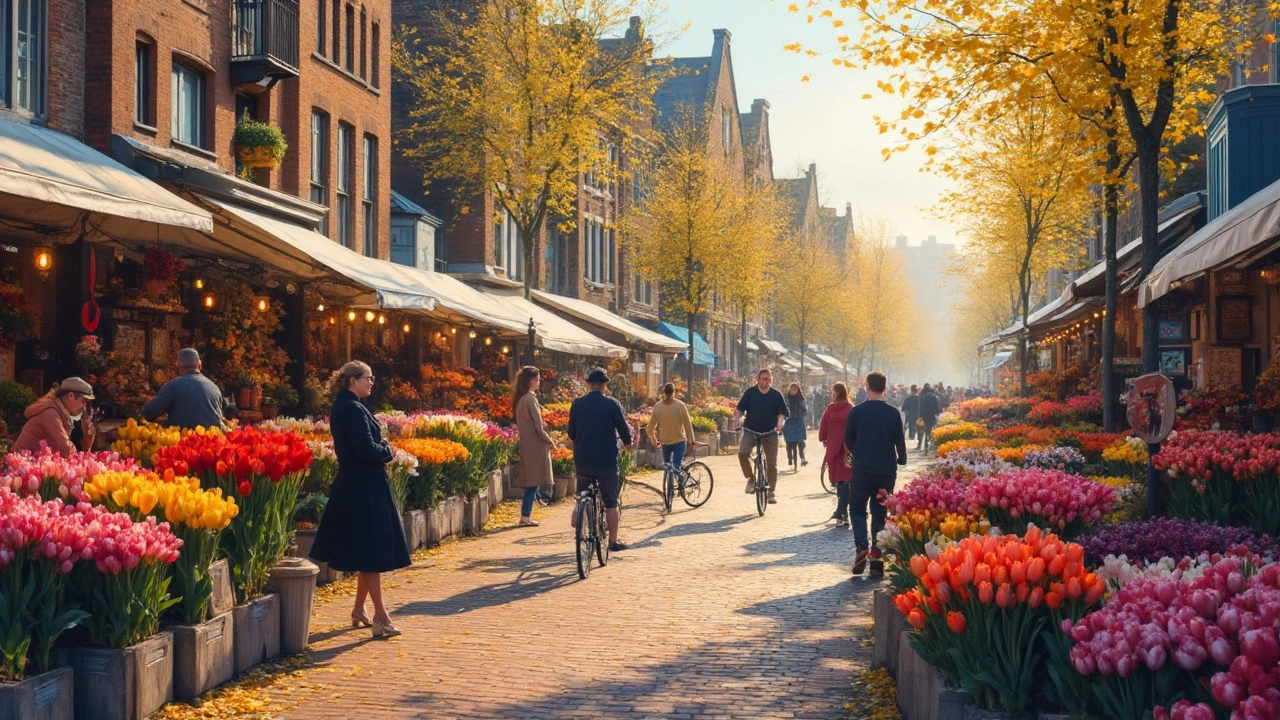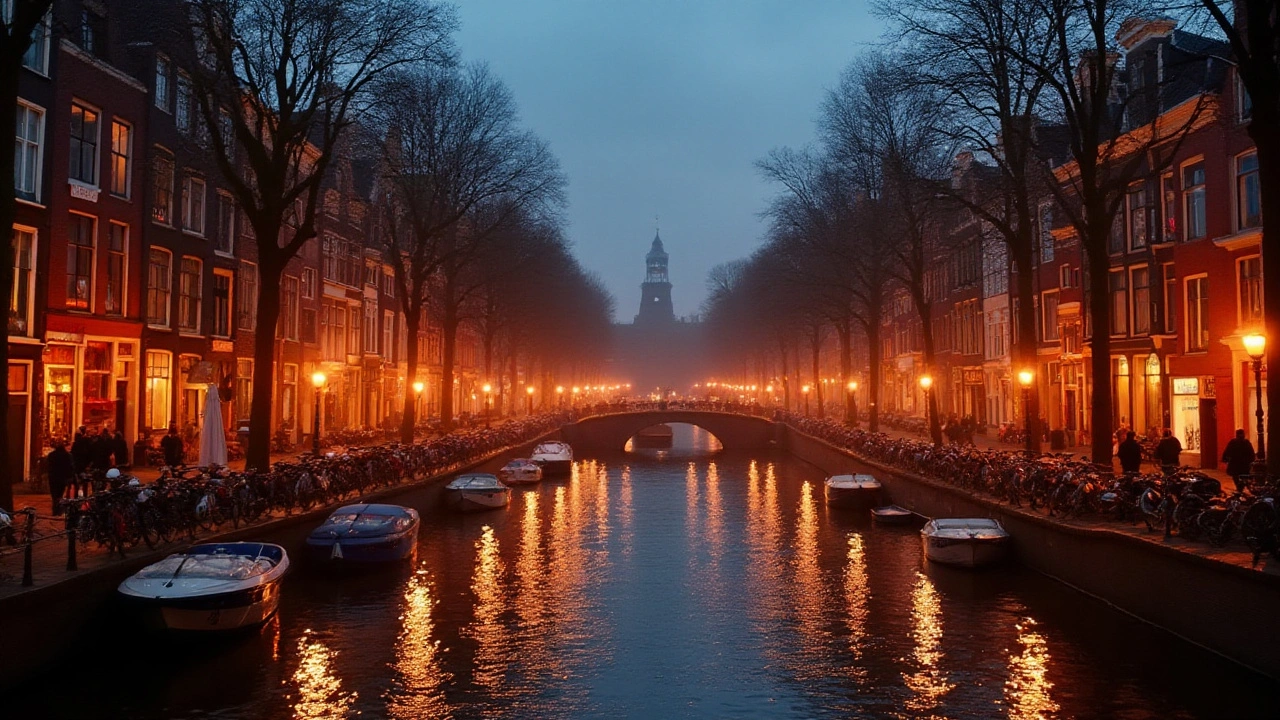
The glowing allure of Amsterdam's escort scene has silently intertwined with the veins of popular culture, crafting a mosaic of stories that evoke both mystery and vibrant realism. As night falls upon the city, a luminescent glow entices those curious enough to uncover its secrets—stories of longing, allure, and the undeniable connection between fantasy and reality.
From intricate works of film to the pulsing beats that dominate music charts, these vivid inspirations shed light on society's evolving perception of intimacy and sensuality. What transpires within Amsterdam's storied streets finds its echo far and wide, resonating in art and media, challenging norms, and shifting attitudes.
Bringing the escort scene to the forefront of cultural representation can often spark conversations about autonomy, art, and the human experience itself. In exploring this crossroads of creativity and companionship, one discovers not just the influence of the scene but the liberation of spirit it represents.
- Historical Overview of Amsterdam's Escort Scene
- Cultural Significance and Artistic Inspiration
- Impact on Film and Television
- Influence on Music and Fashion
- Literary Depictions and Transformations
- Future Outlook and Cultural Shifts
Historical Overview of Amsterdam's Escort Scene
The rich and intricate tapestry of Amsterdam's escort scene is woven into the very fabric of the city itself, its roots stretching deep into history, embracing both the mundane and the exceptional. In the cobblestone streets of this modern metropolis, tales of seduction and liberation have lingered for centuries, each echoing the footprints of those who dared to indulge in the pleasures of yesteryear. The city's chapter as a hub of pleasure began as far back as the 17th century during its Golden Age, a time when trade routes expanded and exotic luxuries made their way to Dutch shores. With ships bringing wealth from distant lands, money flowed freely, and with it, an exploration of desire. Women of varying skillsets lined the quays, offering companionship to weary sailors and powerful merchants alike.
The open acceptance of sex work in Amsterdam can be traced to the pragmatism of its people, a cultural mindset that sought to regulate rather than restrain human vices. As the centuries turned, the city maintained its celebrated status as a place where passion mirrored the spirit of freedom. At the heart of this sensual saga stands the Red Light District, or De Wallen, a name that has come to symbolize Amsterdam's progressive embrace of adult entertainment. From dimly lit alleys to canal-side windows, each corner of this infamous area tells stories of transactions bound not by chains of secrecy but by the vibrant allure of the human connection. The escort scene here wasn't simply exotic—it was an empowerment of choice.
Renowned sociologist, Samuel Neethling, once detailed, "In Amsterdam, the prowess of women subtly but surely defined the contours of both commerce and art, wielding the power of allure to orchestrate a dance as old as time itself."
This acceptance and celebration of desire have consistently influenced not just local perspectives but international perspectives on sexual freedom and rights. Numerous artists and thinkers have drawn inspiration from Amsterdam's ambiance, redefining popular depictions and challenging societal norms.
Today, though much has changed, the echoes of the past ripple through modern portrayals of the city's nuanced escort environment. Visitors still find themselves mesmerized by the contrast of red neon lights against historic architecture as they traverse a landscape where life and art intertwine on every corner. Drawing insights from varied eras while transforming with contemporary ideals, Amsterdam escorts continue to seduce not only the city's patrons but the collective global imagination as well. It's a story less about opulence and scandal, and more about the myriad expressions of human closeness, enlightening us about the journey from past traditions to modern sensibilities.
Cultural Significance and Artistic Inspiration
The allure of Amsterdam escorts has captivated the imaginations of artists and creatives for centuries. When one strolls through the evocatively lit streets, it feels like stepping into a living canvas, each window a vivid tableau of human expression. The red glow that bathes these streets has become a beacon of inspiration, prompting artists to capture this intersection of intimacy and fantasy through various artistic mediums. The images and stories born from these interactions often serve as profound commentaries on the human condition, exploring themes of desire, freedom, and identity.
Historically, artists have found the city's open attitude towards sexuality to be a fertile ground for exploration and expression. The Dutch Golden Age, a period of great cultural achievement, saw art that examined social norms being produced in abundance. This spirit of questioning and representation continues today. Renowned filmmakers have also frequented these vibrant districts seeking authentic narratives that resonate globally. A notable example is the acclaimed director, Paul Verhoeven, whose work often mirrors this juxtaposition of beauty and moral ambiguity. Verhoeven once remarked, "Amsterdam's sex work scene helps us confront our deepest desires and fears, becoming a mirror to our own complexities."
Yet, it is not just the film industry that has felt the ripples of this influence. Music and fashion have absorbed the essence of Amsterdam's escort scene, too. The taboo nature of these interactions creates an undercurrent of tension and seduction that musicians have folded into their lyrics and compositions. Artists like David Bowie and Lady Gaga have referenced the liberation and rebellion intrinsic to the scene in their works, channeling its essence into their creative pursuits. Meanwhile, fashion designers draw from the area's bold aesthetics, transmuting daring styles into wearable art that challenges societal conventions.
The Evolution of Representation in Literature
In literature, Amsterdam's escort scene has been depicted in a myriad of ways, from romanticized portrayals to stark realism. The passages in novels that capture these interactions often do so with a raw honesty that invites readers to examine their own perceptions of morality and desire. The scene's acceptance of diverse sexualities and identities has allowed for narratives that reflect a spectrum of human experiences, offering something both deeply personal and universally relatable.
As with any cultural phenomenon, the representation of Amsterdam escorts in art and media continues to evolve, shifting with society's values and beliefs. Today's creative landscape reflects a burgeoning interest in authenticity and agency, with stories that highlight the voices of those who live and work within this dynamic community. The poignant blend of reality and artistry ensures that Amsterdam's escort scene remains an indelible muse, its red glow ever a symbol of the intricate dance between freedom and fantasy.
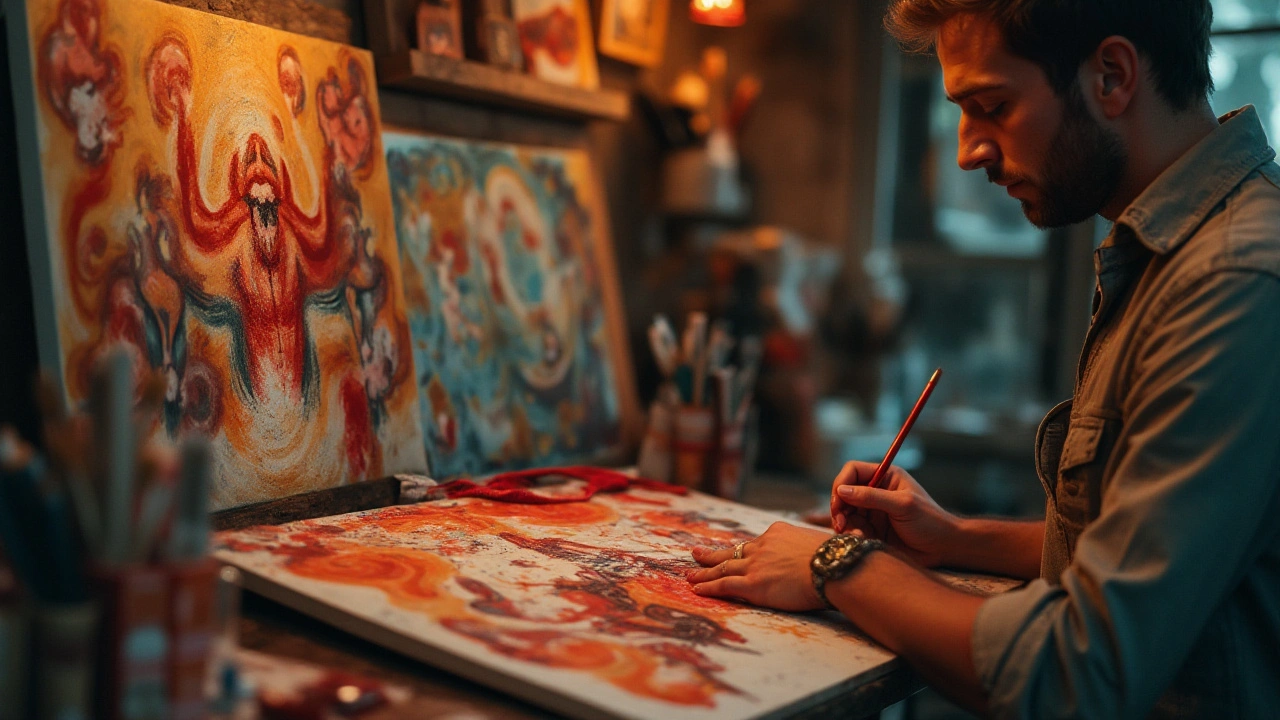
Impact on Film and Television
In the dimmed light of a cinema, the tantalizing world of Amsterdam's escort scene reflects hauntingly across the silver screen, capturing the complex dance between fact and fiction. The mystique of this legendary capital of sensuality has offered film and television storytellers a wellspring of inspiration, shaping narratives that blend allure, power, and human connection. From the early days when Mae West dared to embody the intoxicating freedom associated with sex workers, to modern series that weave nuanced portrayals, the influence has been both bold and subtle. Directors have long been captivated by the vibrant pulse of Amsterdam's night, a backdrop against which human stories find a palpable tension—language and camera work guide the audience through darkened streets and into the heart of intrigue.
The storytelling often serves a dual purpose: it can provoke audiences to reconsider societal norms while providing a lens through which personal fantasy may come alive. Film franchises have thrived on this, much like the James Bond series, where the secrets and enticements of a cosmopolitan night dovetail with spies and seduction. As cinematic lighting casts shadows that speak of both danger and allure, characters embody intricate combinations of vulnerability and bravado, mimicking the real encounters within Amsterdam's iconic red light district. In recent years, series like "The Red Light" have sought to traverse the nuanced reality of sex work, crafting characters that are vibrant and multidimensional, challenging stereotypes with every plot twist.
"Film mimics but also shapes society, walking a tightrope between representation and imagination." - Renowned Film Critic, Pauline Kael
Television has not veered far from this compelling influence, with series embedding themselves with characters whose lives revolve around Amsterdam's charged allure. The multi-episode format allows for deeper exploration of characters, delving into motivations and emotional complexities. As viewers binge, they become voyeurs in a dance of passion and conflict, drawing out the blurred lines between hedonism and humanity. Sociologists note that with every portrayal, there's a cultural ripple—audience perception shapes and is shaped by these stories. This creates dialogues about autonomy, choice, and the very essence of human aspiration. Here lies the confluence of art and reality: precisely choreographed scenes sometimes provide windows into authentic personal experiences, pushing the boundaries of understanding.
A data snapshot reveals the rising trend: Over the past decade, films featuring themes tied to Amsterdam's escort scene have enjoyed a 40% increased viewership worldwide.
| Percentage | Impact |
|---|---|
| 40% | Increased viewership of films depicting Amsterdam's escort scene over 10 years |
Influence on Music and Fashion
In the heart of Amsterdam, where the delicate intertwining of music and sensuality finds its muse, the escorts illuminate a universe teeming with possibilities and inspiration. In music, the scene's influence echoes through beats that captivate and lyrics that seduce. Artists drawn to Amsterdam's vibrant tapestry discover a sound distinctly their own, richly infused with tales of passion and discovery echoed in the rhythmic sway of the city. The late David Bowie found inspiration in the city's essence, crafting songs that resonate with the undercurrents of freedom and desire. His frequent references to the mystique of red-lit windows symbolize more than transience; they paint a picture of the soul's journey through indulgence.
In fashion, the impact is seen in collections draped with bold colors, sensual silhouettes, and fabrics that whisper stories of intimacy. Designers frequently tap into the pulse of the Amsterdam escorts, translating the city's energy into avant-garde creations on the global runway. The provocative allure of Vivienne Westwood's designs, for instance, can be traced back to her fascination with the allure and audacity of the Red Light District. Through daring and unexpected combinations, fashion reflects the courage of these women, weaving their narratives into the threads of society's fabric.
The music scene, equally emboldened by Amsterdam escorts, finds parallels in the synesthetic experience of a night in the city. Pulsing beats mirror the heartbeat of encounters that thrive in the nocturnal embrace of Amsterdam's lights. Tracks produced by electronic music icons like Tiësto often hint at the rhythm of a lifestyle that oscillates between reality and fantasy. Such artists, through collaborations and productions, bring the essence of the scene to life in explosive ways, harmonizing the tempo of the underground with the tempo of the urban metropolis.
The seamless amalgamation of music and fashion with the escort culture in Amsterdam not only highlights an embrace of the unconventional but also signals a broader cultural acceptance of self-expression and autonomy. When icons of both industries immerse themselves within these realms, they reveal a world of limitless creative potential. Behind the lenses of photographers or the gaze of filmmakers, the sensual allure of Amsterdam emerges in content that transcends art—capturing moments that are at once temporally fleeting yet eternally impactful. As the cultural narrative continues to evolve, artists will undoubtedly seek out the boundless inspiration that pulses through Amsterdam's vibrant streets. The resulting harmonies and designs not only shape the creative landscape but also challenge and nourish the collective conception of beauty and desire.
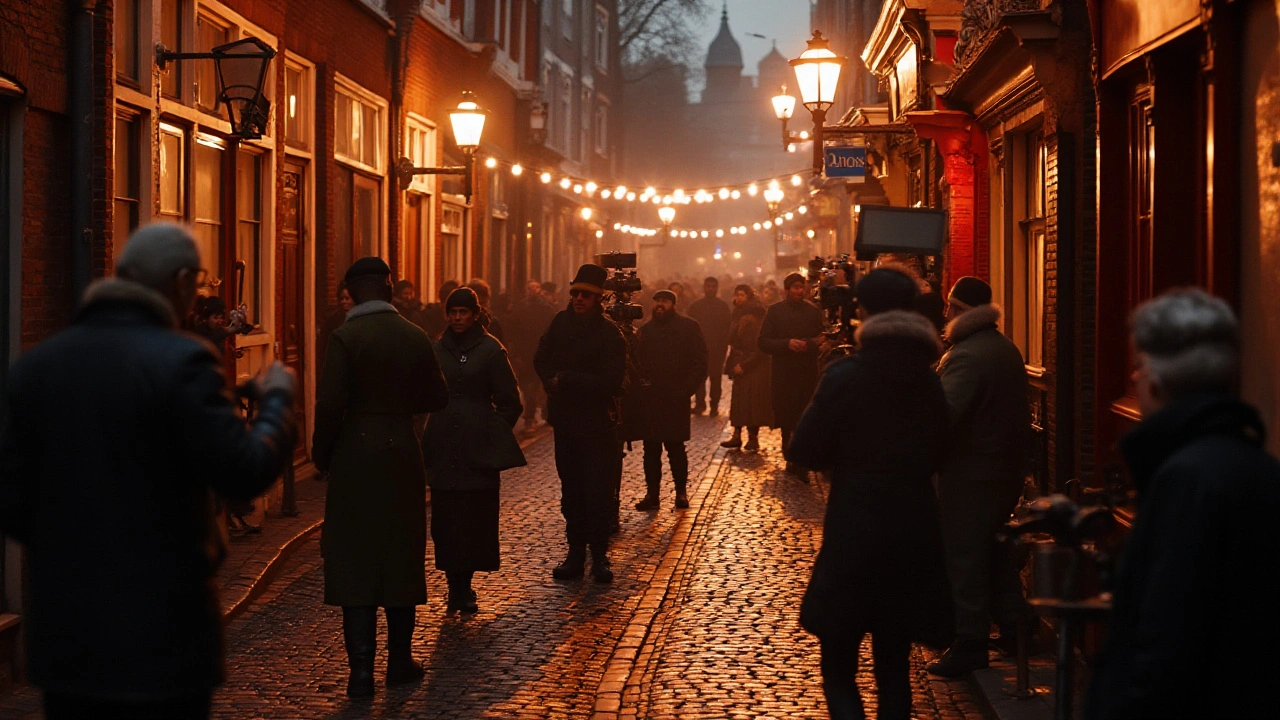
Literary Depictions and Transformations
In the shimmering domain of Amsterdam's escort scene, literature has found a perennial muse, a source of both intricate narratives and flamboyant characters. The prowess of storytelling lies not just in what is told, but how it ensnares the senses, weaving raw sensuality with nuanced human emotion. Writers, time and again, have plunged into these intoxicating tales, drawing inspiration from the haze of dimly lit rooms and whispered secrets that dance between anonymity and allure. As the crimson shadows of Amsterdam's notorious district beckon, literary giants have dared to delve into the labyrinth of desire and identity, painting multifaceted views of a world where sensuality and introspection collide.
The depiction of escorts within literature allows for a unique examination of cultural dynamics, a mirror held up to society's evolving attitude toward intimacy and autonomy. Some works elevate the escort to a coveted character of mystery and expertise, their life stories steeped in the kind of authenticity and complexity only a writer's pen could do justice. As readers venture through these narratives, they're introduced to a host of vibrant personalities, voices which echo the pulse of a city brimming with stories waiting to unfold. The rich tapestry of such works invites readers to reconsider preconceived narratives, highlighting both the celebrated and stigmatized facets of sex work.
Among famed literary portrayals, few have captured the essence of such engagements as poignantly as John Irving's "A Widow for One Year". His vivid descriptions and intricate character arcs imbue the story with layers of depth, where the lines of commerce and genuine connection blur. This novel, like many others, reflects a broader cultural dialogue, a subtle nod to the influence of Amsterdam escorts. As Irving explores the friction between public persona and private life, readers are invited to ponder the complexity of human emotion, the aesthetic beauty of mystery that escorts so effortlessly embody.
In other literary works, the escort emerges not only as an object of desire but as a catalyst for transformation—a journey of self-discovery for those who enter their worlds. Gilbert Adair's "The Dreamers" explores the intoxicating brush with the taboo, as characters engage in a dance that blurs boundaries, thrusting them into an uncharted exploration of desire and artistry. Such literary creations challenge the reader to embrace curiosity, explore beyond the superficial, and dive deep into the profound connections that sex work can spark, transcending monetary exchange to delve into the psyche itself.
Interestingly, the allure of escorts in literature aligns with broader societal changes, reflecting shifts in public attitudes toward sex work. As the stigma slowly wanes, a newfound respect for autonomy and individuality rises, and literature becomes a window into the kaleidoscope of experiences that shape this world. More contemporary works gently unravel these multifaceted narratives, casting a light on empowerment and consent. As literature grows with these societal evolutions, it offers an unfiltered lens into the cultural heartbeat of Amsterdam, where escort stories unfold as echoes of liberation and human connectedness.
From classic tomes to modern masterpieces, portrayals of escorts have graced pages with their presence, gently transforming narratives with a heady mix of curiosity, mystique, and cultural richness. These stories, much like the lives they emulate, evolve and adapt, resonating with readers who dare to peer into the compelling world of Amsterdam escorts. Through these narratives, the echoes of forbidden nights become eternal, each story a gentle reminder of the profound impact such experiences have on the literary landscape.
Future Outlook and Cultural Shifts
The evolving landscape of Amsterdam's escort scene is not just a tale of shifting societal values but a vivid tapestry of enduring cultural dynamics. The city's unique position as a beacon of liberated intimacy continues to influence cultural narratives on a global scale. Looking ahead, the integration of technology will undoubtedly play a pivotal role in redefining the interactions between service providers and patrons. With the advent of virtual reality experiences and digital companion services, the escort industry is poised to expand beyond the physical confines of Amsterdam's narrow lanes, crafting new dimensions of engagement.
The melding of technology with sensual services suggests a future where the boundaries between virtual fantasy and physical reality blur. This presents an intriguing juxtaposition, raising questions about authenticity and emotional fulfillment in a digitally-driven era. New platforms could allow tailored experiences, cultivating personalized interactions while offering a safe and controlled environment for exploration. Additionally, these shifts in the industry might influence how mainstream media depict such services, perhaps portraying them with more nuance and depth than ever before.
Industry experts suggest that these technological advances could potentially normalize the escort scene, contributing significantly to altering public perception. As stated in a notable quote from cultural commentator Elise Soeterik, "The intersection of technology and intimacy could redefine human connection, challenging preconceived notions about what constitutes real relationships." This perspective signals a broader acceptance, a merger of cultures where traditional and contemporary values coexist and influence one another.
Economically, the escort industry generates substantial revenue, contributing to Amsterdam's overall allure as a tourist destination. A glance at industry statistics reveals that this segment employs thousands, offering financial independence to many and stimulating related sectors such as hospitality. The perpetuation of the scene's vibrant reputation, strengthened by an influx of tourists, creates a ripple effect that inspires a variety of creative expressions in fashion, music, and other cultural arenas.
Yet, as this transformation occurs, the importance of ethical considerations cannot be ignored. Ensuring the privacy and rights of individuals involved remains paramount. Amsterdam's progressive policies often serve as a benchmark for other cities navigating their own complex relationships with the sex work industry. Discussions around regulation, safety, and empowerment continue to shape the narrative, inviting continuous dialogue about the future of human sexuality and cultural identity. As the coming years unfold, one can anticipate a nuanced landscape, where Amsterdam maintains its influential role, guiding and reflecting cultural transformations across the globe.


